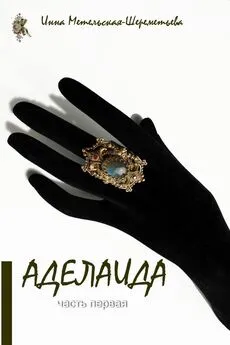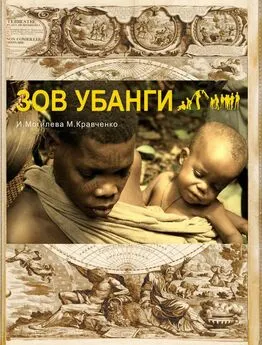Инна Метельская-Шереметьева - Back to the past
- Название:Back to the past
- Автор:
- Жанр:
- Издательство:Литагент Selfpub.ru (искл)
- Год:2017
- ISBN:нет данных
- Рейтинг:
- Избранное:Добавить в избранное
-
Отзывы:
-
Ваша оценка:
Инна Метельская-Шереметьева - Back to the past краткое содержание
Back to the past - читать онлайн бесплатно ознакомительный отрывок
Интервал:
Закладка:
Malaria is considered another curse of the tropics. This trouble is harder to fight. There are so many types of this disease as well as its pathogens. The fact that malaria is passed on by a bite of an insect is common knowledge and doesn’t speak of its true insidiousness. Australian scientists have found out why it is so hard for a person to develop an immunity to this disease. It turns out that the malaria pathogen sort of plays hide-and-seek with the human immune system. When it infects human cells, it leaves its protein on the surface. However, before the immune system recognises this protein as xenogenic and starts to produce anti-bodies, the genetic system of the malaria pathogen switches to a different mode and starts leaving a different kind of protein on the surface of the newly infected cells. The pathogen’s DNA structure includes no less than 50 such proteins. This allows the pathogens to escape the effect of a person’s immune system for a long time. This is why even today there is no inoculation against malaria. The best time-tested medicines include Lariam, Mefloquine, Doxycycline, Primaquine, Chloroquine and some others (all of which have a rather high degree of side effects and restrictions). Some men make it through by drinking gin. They say quinine, which is in the composition of this drink, can serve as a preventive measure. Undoubtedly, it is not the most correct decision even though it is a “pleasant” one. We took gin with us on the trips not so much to protect ourselves from malaria as to use it as a kind of alcohol solution (for disinfecting wounds, cuts, etc.), a “two-in-one” so to put it. We tried to avoid malaria first of all by using all kinds of repellants, anti-mosquito smoke candles and spirals, and made sure we used anti-mosquito netting.
By the way, you should pay special attention to all the equipment before your expedition begins. Temperature ranges in the jungle (depending on the altitude and season) may go from +10 to +35 degrees Centigrade. The high humidity, which rises to 90% even during the so called ‘dry’ season, requires your clothes to have specific characteristics. Special tracking boots are absolutely essential. Besides, when setting off on a difficult route, especially somewhere where it is only possible to get to by small aircraft, remember that your luggage must be relatively light.
Learning about the appropriate outfit from the hard experience of our previous trips, we chose for ourselves a certain minimum amount of equipment. As a rule, each of our backpacks has two pairs of cotton hiking trousers with a lot of pockets, two long sleeve shirts, a tank top, a windbreaker, a panama hat and a bandana. All the clothes are in light colors as dark ones attract mosquitoes. A woman’s pareu turned out to be quite a versatile piece. You can use this large and thin piece of cloth as a cloak, rag and even a breechcloth. When choosing tall boots for yourself, make sure that they are not water resistant. You read it right! Under conditions where the water will in most cases be over your knees, it is useless to hope that your footwear will remain dry. Let it get wet – but it has to dry out quickly, so the soles must have special draining and ventilation holes. You need tall boots to keep your ankles straight the whole time you will be making your way on slippery logs. In addition, it is good psychological support when you think that they will protect you from snake bites. At least, this is what we counted on. Choose comfortable socks and underwear, better from sportswear shops. It will help you to avoid calluses and rashes during long walks. You must make it a habit while being in the tropics to spray your toes with Miramistin antiseptic and use special zinc powder. Otherwise, the risk of getting a fungus or being infected with soil parasites is very high.
Pay special attention when choosing medications. Before going, you should consult a doctor about how to assemble a first aid kit, considering the current state of your health, intolerance to certain drugs, the ability to give first aid in cases of cardiovascular disease, food poisoning, stomach infections, injuries or acute respiratory diseases.
Choosing food supplies for the whole route and special presents for the locals is another important issue.
Lately, we have started to acquire most of our food supplies in Moscow. Of course, you can buy dry soups, freeze-dried vegetables and instant cereals everywhere these days. However, we prefer home-made products and not because of our strong patriotic feelings. Firstly, these prepared foods will taste like home. They won’t be unexpectedly too spicy, too salty or too sweet. Secondly, a manual in their native language will help men to master cooking without any risk of leaving the team without lunch or at least to explain to the guides what they should cook first. When calculating the amount of food supplies, remember that your guides will be happy to join you and try your pea soup. The natives will most probably also be very happy about the unexpected treat. So take more than enough of food. You will need limited amounts of salt, sugar (or sweetener), coffee, tea, cocoa and powdered milk only to treat yourselves once in a while with the your usual drinks. By the way, you are likely to leave salt as a present to some tribal members. It is a strategic product for them. We often take tobacco and lollypops for the same purpose. It’s good to have a healthy supply of lemons (which are a reliable aid when you are dehydrated or have a saline imbalance) and drinking water. One of the most important rules never to be ignored is to never drink water from unknown water sources even if the locals are sure about drinking it. If you don’t have a choice in that matter, drink only boiled water. A pot and some supplies of solid alcohol will be of some use when you try to start a fire in the humid jungle. Head lights and a multi-functional jackknife will also be very useful as well as water-proof bags (special hermetically sealed bags), where you will put all your things to prevent them from getting wet. This is practically all that could be of any use in the jungle. One tent is actually big enough for everybody, but experience shows that it’s always good to have another one “just in case”. After some time we decided to stop using sleeping bags, sticking only to tourist mats. As for presents, you should choose only those things which are recommended by the local guides. In one of our previous trips, for example, a very expensive Swiss army knife turned out to be absolutely useless even though we had meant to give it to a tribal chief. However, a small frosted key-chain knife with a nail clipper attached to it was a true hit as well as an illustrated magazine, lost and forgotten in one of the pockets of a backpack. The Papuans will be pleased to see cheap toy pennywhistles (like any simple toys which produce sounds), T-shirts and air balloons. They will prefer dampened local tobacco to some expensive cigarettes from Moscow. You definitely shouldn’t present natives with any alcohol. Everybody knows that their bodies react to alcohol very badly and even the smallest amount may cause serious poisoning.
Chapter Two. Wamena.
WONDERFUL CAVEMEN LIVE THERE
Andrey’s Story
As I have mentioned above, there shouldn’t be any problems getting a pass on your own to visit the closed (belonging to the national park) territories in the further part of Irian Jaya. The pass itself costs a few dollars and is given to travelers upon presenting their passport with an Indonesian visa, two photos and a filled-in application form (which is very simple). We decided to use the help of a local assistant. By the way, we kept using the locals’ help and not due to our own slow speed. In an unexplored area still uninhabited with travel agents (somewhere like Baliem Valley in Irian Jaya, the Banga suburbs in the Central African Republic or Napo river basin in Ecuador), the locals’ active help in solving different matters facing travelers allows them to speed up the process quite significantly and acquire some useful contacts.
Comparing the life of the locals with your own, realizing how much more difficult it is and how much it lacks, a normal and racially unprejudiced person from our European civilization must at least want to help the locals in some way. Of course, I mean material aid here. It is like feeding a hungry child or helping a disabled old man. These are the realities of our worlds, of our and their living conditions. Without blaming the authorities, God or just universal injustice, think simply: if I can share something, I will. But in order not to train the locals to beg and cajole money for allowing you to take a picture, in order to avoid in Irian Jaya what happened in Australia where ‘kind’ Europeans turned aborigines into beggars and drunkards and made begging a full-time job of the locals, we always asked them to do some work for us. Everything is simple – you do work, you get money. And many times we noticed that Indonesians appreciate such earned money much more than donations. I am deviating from the topic though but in this book it is Michael and Alexey’s responsibility.
It’s not difficult to get a ticket to Wamena either. Theoretically, planes fly to this small town regularly, but in fact the flight schedule depends on how full the planes are. If the quota of 25 seats has been filled, the flight will take place. If it hasn’t, you will have to wait. And while we are waiting for a plane, I will tell you a short story about Wamena and the Baliem Valley – the last outpost of civilization in Irian Jaya – as it is often called in various tourist guidebooks. Unfortunately, it is impossible to determine exactly when the local tribes started full-scale exploration of Valley Baliem. Here, I don’t mean settlement in the valley, but specifically exploration, cultivation and turning it into a certain center of the inter-tribal community. Anyway, when American explorers discovered Wamena in 1938, it was already a rather big settlement with developed farming, which was mostly inhabited by the Dani tribes. Members of the Yali and Lani tribes lived and worked nearby, but higher in the mountains, sometimes coming down to Wamena to exchange handicraft products for food. That is how National Geographic magazine described Wamena in 1941. The word “Wamena” itself is translated from the local language as “a pig for you”. Hunters probably used to catch wild pigs and bring them to the settlement in exchange for cultivated vegetables.
The Baliem river valley is located 1600 meters above sea level. It is 72 km long, and from 15 to 75 km wide. Visually, it is a huge ravine impossible to cover with your eye, hidden from the rest of the world by almost totally vertical rocks. Stunning views, a rather moderate climate and some rudiments of civilization attracted the first missionaries to Wamena about 10 years after its first publication in the magazine. It was a Danish mission. Obviously, having brought here metal tools, primitive utensils, clothes and books, the missionaries first of all started building churches and schools. They were successful. There are about twenty parishes and four schools in Wamena today. Not all the churches look well attended. Some of their yards are overgrown with weeds and almost all of them are empty. To be more accurate, locals go to church, but they do it probably because their ancestors did it as well. We weren’t able to find out if they perform the same ceremonies – christenings, weddings, or prayers. Although most missionaries left Wamena in 1962, some volunteer pastors still live there, though they are not in a rush to talk about their successes. It isn’t the most important thing though. Pastors are doing a great thing. They educate local children (as well as they can), treat people and animals, and try to teach some moral principles of peaceful co-existence of different tribes. By the way, Wamena’s inhabitants’ attitude towards school is rather neutral and even cool. Children don’t have to go to class regularly. One of the neighbours’ children’s example is usually the one to follow if they have become important people and make more money than their fellow tribesmen. Neither clothes nor school lunches have the same magical influence. Children are mostly busy pasturing animals, playing football or begging for money in the town streets, seeing off tourist cars screaming “gulya-gulya-gulya– ka-a”, which means “give me a candy!” However, many times we have also seen children dressed in uniform skirts and trousers, wearing white shirts and carrying books, walking somewhere along the roads, most probably, to school.
Читать дальшеИнтервал:
Закладка:





![Инна Метельская-Шереметьева - Кулинарная КОНСЕРВАтория [Проверенные годами и поколениями рецепты заготовок от классических до экзотических] [litres]](/books/1060030/inna-metelskaya.webp)




